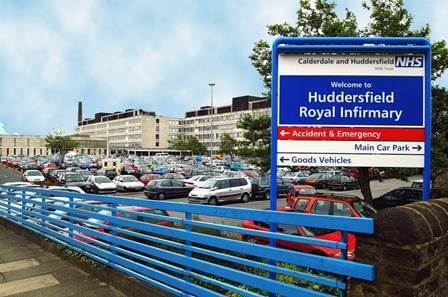Around the world healthcare organisations are being challenged to do more with less resources. In the UK the NHS is trying to find £20 billion in efficiency savings. Can this be done without reducing services to patients? After carrying out experiments in numerous hospitals in several different countries we can now see how lean can help to close this performance gap in healthcare, as lean has done in many other sectors.

There are two approaches to lean – the bottom-up involvement of front line staff in continuous improvement activity and the top-down use of lean to close critical performance gaps. The weakness of the bottom-up approach is that the many islands of improvement are never joined up to deliver hospital-wide gains. The weakness of the top-down approach is that it fails to address the end-to-end patient journey or to reach down to the front line.
Combining the two approaches is a winning combination for all parties – less hassle and unnecessary waiting for patients, more time for staff to spend caring for patients and freed-up resources for management to use to meet the challenges facing the organisation – to for instance reduce waiting times, to take on additional elective work or to close excess capacity safely. One of the best examples can be found at the HSJ’s Best Acute Trust of 2010, Calderdale and Huddersfield NHS Foundation Trust, which has reduced medical length of stay by 30% to one of the shortest in the NHS, while also closing two wards last winter. Other hospital pioneers around the world are now following their example.
The first step is to recognise that patient demand (both for admission and discharge) is in fact very predictable, even for emergency patients. Our research shows that much of the apparent variability, including the so-called “winter pressures”, is caused by the way internal and external resources are scheduled and compounded by the close proximity to the financial year end, not by patients or the seasons. The second step is to follow the elective and emergency patient journeys all the way to discharge. Typically over 25% of medical patients are medically fit for discharge but continue to block beds for several days. Unlocking this entails re-thinking the way that the work on the wards is planned, the timely delivery of the support services patients need to be able to leave and working with outside agencies to prepare nursing home beds, care in the community or financial support ahead of time.
The essential building block to manage these patient journeys is a Visual Hospital board where the status of every bed in the hospital is updated every two hours. This makes the “demand to get out” visible, triggers the necessary discharge actions and signals the need to match capacity with changes in demand. The second building block is for the core medical staff to develop and make visible a plan for every patient, detailing what is expected to happen and when during their stay all the way to discharge and that is updated daily. Synchronising these plans makes the work to be done and whether it has been completed clear and visible to all staff. Finally someone has to be given the responsibility for managing the patient journeys across many departments from admission to discharge. Their job is to see that today’s work is being done as planned, to unblock disruptions and to gain agreement from all concerned on what needs to be done to improve these patient journeys. Without these foundations, hospital performance is unlikely to improve.
Putting these building blocks in place, focusing improvement activities and turning freed-up capacity into bottom-line savings is the responsibility of top management. But in our experience NHS managers are locked in a viscous circle that distracts them from doing so. They are continually responding to new policy initiatives from central government, which can translate into over 500 live projects chasing 350 or more targets in a typical organisation The endless rounds of meetings to prepare these project plans, review them and then explain why, on top of an already overloaded day job, they were not completed eats up all their time. We call this the “Bermuda Triangle” of management in the NHS. This makes it impossible to support managers improving patient journeys or to focus efforts on the vital few actions that will make the biggest difference to the performance of the organisation. As long as this viscous circle continues, managers will struggle to realise any efficiency savings.
This viscous circle also explains why so many well intentioned initiatives to reform the NHS from the centre have run into the sand and failed to deliver performance improvements. Although these initiatives are often hijacked by vested interests, the core problem is that there is no effective mechanism for translating them into action. This is often made worse by periodic structural reorganisations that further distract managers and their staff to worry about their job security rather than improve hospital performance.
A period of stability in which hospitals and commissioning bodies can work together to align demand and capacity with the available resources and remove sources of unnecessary variability in the healthcare system is the key to escaping this viscous circle. Foundation Trust status is improving hospitals’ ability to manage their own finances, but the next step is to create the operational management to improve patient journeys and reduce unnecessary length of stay. Once hospital management begins to see that this is delivering results they will have the confidence to deselect the many other projects that consume valuable resources but do not contribute to improving healthcare
performance.